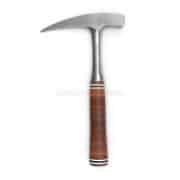A Trip Through Local Geology
Review: Geologic Trip-Rogue Valley, by Ted Konigsmark
By: Anne Newins with additional information provided by George Yates
Manor list-serve readers may have enjoyed a July 17 posting by George Yates about local geology. Among his two attachments was a report written by former resident Ted Konigsmark. Ted, a geologist, was a resident of RVM for about eighteen years before moving to Texas to be closer to family. He wrote a number of articles about geology including Geologic Trip-Rogue Valley, which I recommend to lay readers interested in the subject.
Many people moving to the Manor from outside the Rogue Valley are intrigued by the local topography, and especially our home on Barneburg Hill. They quickly learn that the valley is geologically complex and not easily described. The region has experienced volcanic activity, uprising and lowering elevations, an inland sea, and an assortment of rock formations.
Fortunately, this twenty-page document is the most coherent that I have found. George assisted me with contacting Ted, who graciously allowed us to add his copyrighted work to the RVM library’s collection. George then kindly formatted, printed, and bound the report so that it could be catalogued and available for circulation. It will be included in our “new book” non-fiction display for about six months and then housed in non-fiction, located at 557.95 Konigsmark. This is a slim document and could be missed easily.
The report contains information about various local features such as Roxy Ann Peak, Table Rocks, and Emigrant Lake. The many illustrations are clear and not overly detailed. Of special interest to residents is a good description of Barneburg Hill. I don’t want to include too many details, but below are some of the basic facts:
- The Hill’s elevation is 1680’, about 300 feet above the valley floor.

- The Hill is made of sandstone, conglomerate, and shale.
- The top of the Hill is made of especially thick and hard sandstone, which is highly resistant to erosion (and hopefully earthquakes).
The account includes photos of several RVM geologic features of interest, including “Viagra” Falls on Quail Point Circle. Pictures of the falls and several other large sandstone blocks make it clear why construction and irrigation are such a challenge on campus.
The second attachment, GEOLOGIC TRIP Rim Drive Crater Lake National Park – Ted Konigsmark.pdf, is equally interesting and gives greater insight into the geology of the park. The digital versions of these two documents can be found at the Science & Technology Interest Group site by going to myrvm.org>Resident Information>Science and Technology Interest Group (STIG)>folders, located on the righthand side.
Image above: Massive sandstone near the top of Barneburg Hill




Ann, thank you. This is an excellent article on a topic of interest.